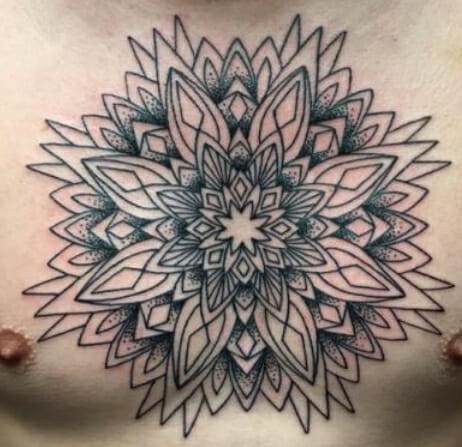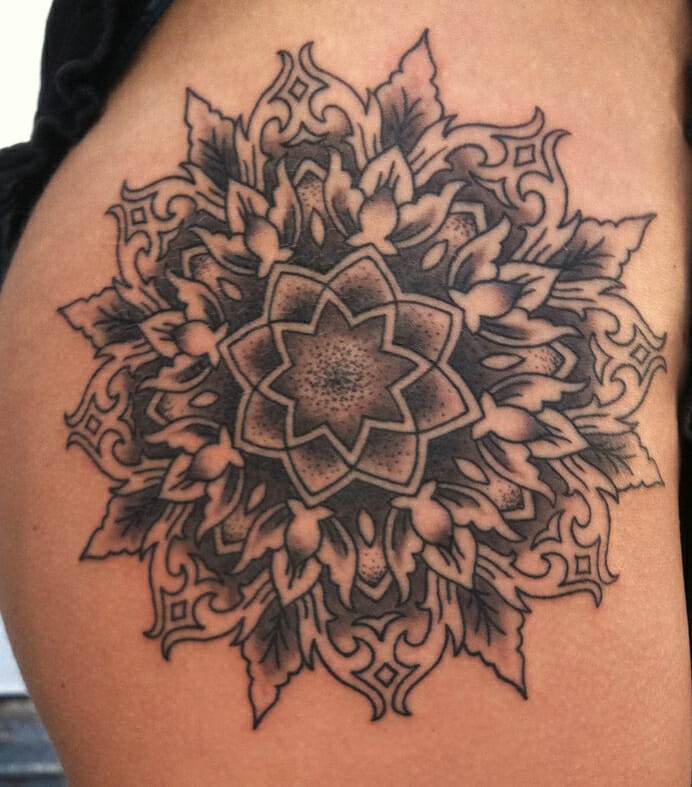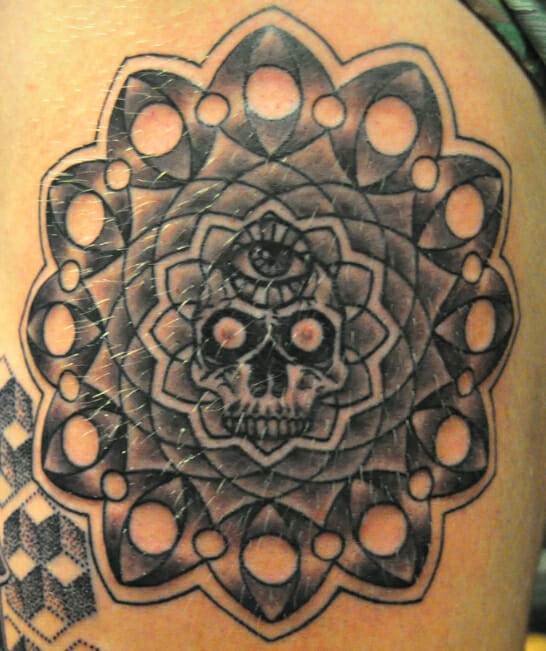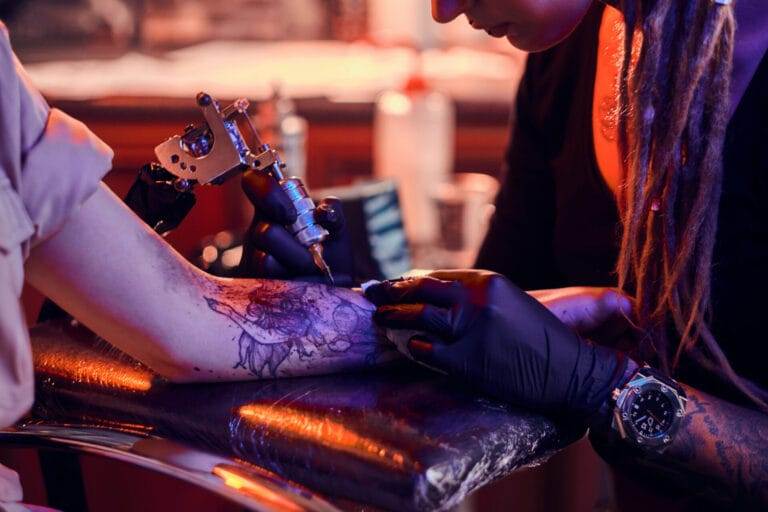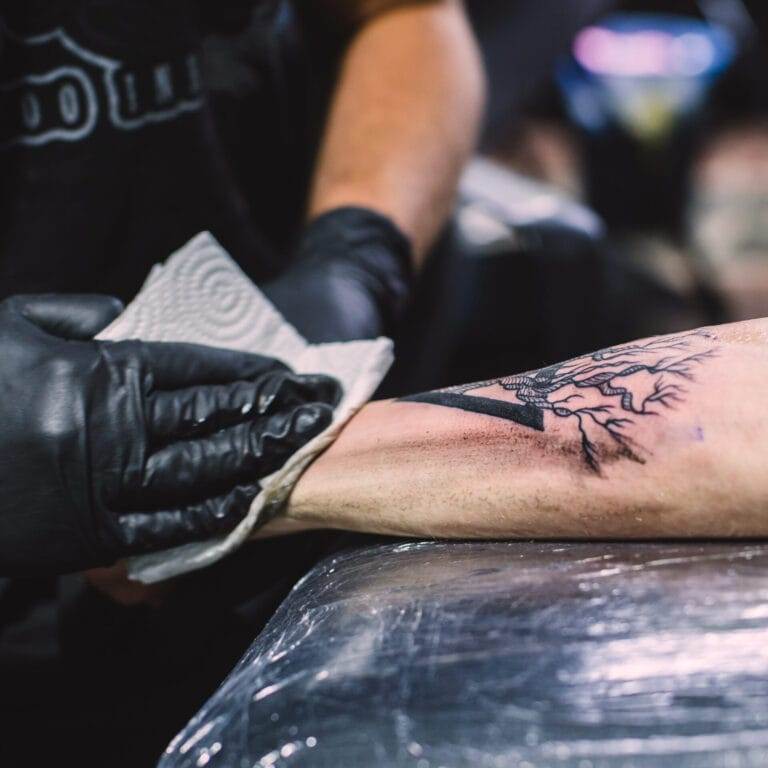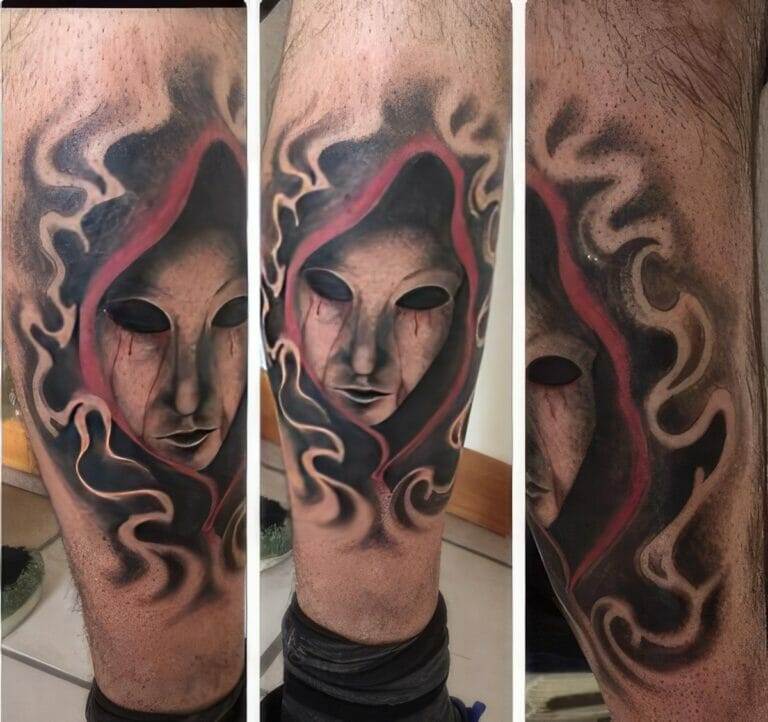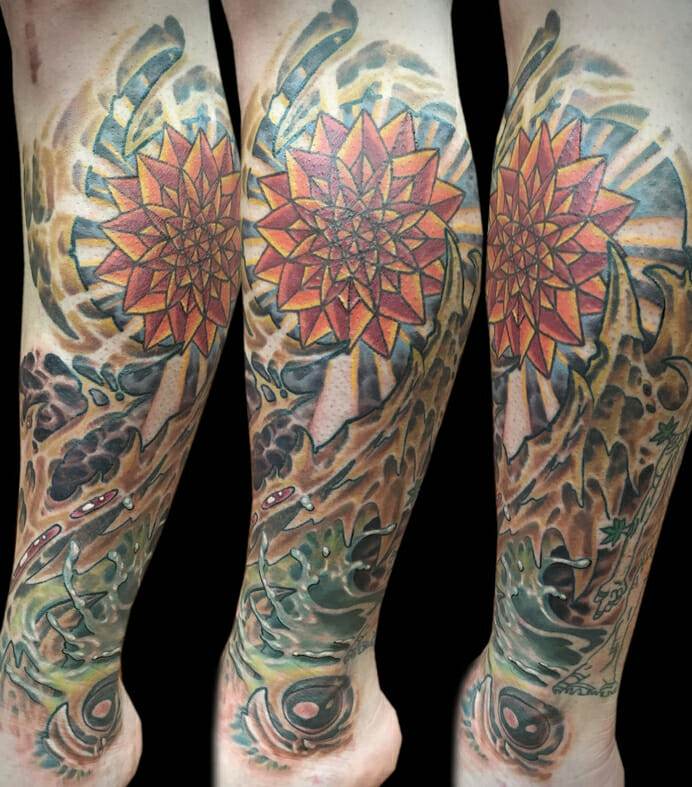
Mandala tattoos have become increasingly popular in recent years, with more and more people choosing to adorn their bodies with these intricate and meaningful designs. Derived from the ancient Sanskrit word for “circle,” mandalas are geometric patterns that hold deep spiritual significance. They have been used for centuries as a tool for meditation, self-reflection, and spiritual growth. In this article, we will explore the world of mandala tattoos, delving into their history, symbolism, and the benefits they can bring to one’s life.
The popularity of mandala tattoos can be attributed to several factors. Firstly, their aesthetic appeal is undeniable. The intricate patterns and symmetrical designs make for visually stunning tattoos that are sure to catch the eye. Additionally, mandalas have a universal appeal, transcending cultural and religious boundaries. They can be found in various forms across different cultures and have been embraced by people from all walks of life. Lastly, mandalas hold deep spiritual significance, which resonates with many individuals seeking a deeper connection with themselves and the universe.
Understanding Sacred Geometry
Sacred geometry is the study of geometric patterns that are believed to hold spiritual significance. It is based on the idea that certain shapes and proportions have inherent meaning and can be found throughout the natural world. Mandala tattoos are a prime example of sacred geometry in practice.
The spiritual significance of mandala tattoos lies in their ability to represent both the universe and the self. The circular shape of a mandala symbolizes wholeness and unity, reflecting the interconnectedness of all things. The intricate patterns within the mandala represent the complexity and diversity of life. By meditating on a mandala or having it permanently inked on one’s body, individuals can tap into this universal energy and gain a deeper understanding of themselves and their place in the world.
The History of Mandala Tattoos
Mandala tattoos have their origins in Hinduism and Buddhism, where they were used as a tool for meditation and spiritual practice. In Hinduism, mandalas were often used in religious rituals and were believed to represent the universe and the divine. In Buddhism, mandalas were used as visual aids for meditation, with practitioners focusing on the intricate patterns to achieve a state of deep concentration and spiritual insight.
Over time, the practice of creating and using mandalas spread to other cultures, including Native American tribes and various indigenous communities. Each culture added its own unique symbolism and meaning to the mandala, resulting in a rich tapestry of interpretations and designs.
In modern tattoo culture, mandala tattoos have gained immense popularity. They are often seen as a form of self-expression and a way to connect with one’s spirituality. Many people choose to get mandala tattoos as a reminder of their own journey towards self-discovery and enlightenment.
The Different Types of Mandala Tattoos
There are several different types of mandalas, each with its own symbolism and meaning. The most common types include:
1. Traditional Mandala: This type of mandala features intricate geometric patterns arranged in a circular shape. It often includes symmetrical elements and is meant to represent balance and harmony.
2. Lotus Mandala: The lotus flower is a powerful symbol in many cultures, representing purity, enlightenment, and spiritual growth. A lotus mandala combines the beauty of the lotus flower with the intricate patterns of a traditional mandala.
3. Animal Mandala: Animal mandalas incorporate animal motifs into the design, adding an extra layer of symbolism. Different animals represent different qualities and characteristics, allowing individuals to connect with specific energies or traits.
4. Chakra Mandala: Chakras are energy centers within the body that are believed to correspond to different aspects of our physical, emotional, and spiritual well-being. Chakra mandalas incorporate the symbols and colors associated with each chakra, allowing individuals to focus on balancing and aligning their energy centers.
The Benefits of Mandala Tattoos
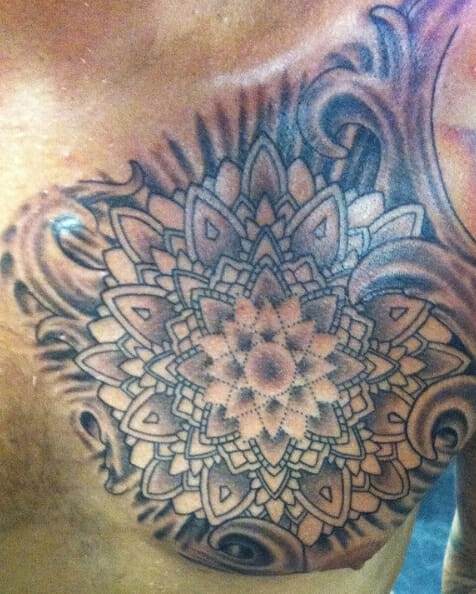
Mandala tattoos offer a range of benefits for those who choose to embrace them. Firstly, they can enhance one’s spiritual journey by serving as a constant reminder of the interconnectedness of all things. By meditating on the intricate patterns of a mandala tattoo, individuals can tap into a deeper sense of self and gain insight into their place in the universe.
Mandalas also promote mindfulness and meditation. The act of focusing on the patterns and colors within a mandala can help quiet the mind and bring about a state of deep relaxation. This can be especially beneficial for those who struggle with anxiety or stress.
Furthermore, mandala tattoos encourage self-reflection and growth. By choosing to permanently ink a mandala on one’s body, individuals are making a commitment to their own personal development. The tattoo serves as a constant reminder to stay true to oneself and to continue on the path of self-discovery.
Mandala Tattoo Design
When choosing a mandala tattoo design, there are several factors to consider. Firstly, think about the size and placement of the tattoo. Larger designs are often more intricate and detailed, while smaller designs can be more subtle and delicate. Consider where on your body you want the tattoo to be placed, as this will affect the overall look and feel of the design.
Next, think about the style of the mandala. Traditional mandalas often feature symmetrical patterns and geometric shapes, while more modern designs may incorporate elements of nature or abstract forms. Consider what resonates with you personally and what you want your tattoo to represent.
Lastly, work with a skilled tattoo artist who specializes in mandala designs. They will be able to bring your vision to life and ensure that the final result is both aesthetically pleasing and spiritually meaningful.
The Tattooing Process
Getting a mandala tattoo is a multi-step process that requires careful planning and preparation. Firstly, it is important to find a reputable tattoo artist who specializes in mandala designs. Look at their portfolio and read reviews from previous clients to ensure that they have the skills and experience necessary to create the tattoo you envision.
Before your tattoo session, it is important to prepare your body and mind. Get a good night’s sleep, eat a healthy meal, and stay hydrated. Avoid alcohol and caffeine, as these can thin the blood and make the tattooing process more difficult.
During the tattoo session, the artist will use a needle to inject ink into the skin, creating the desired design. This process can be uncomfortable or even painful, depending on your pain tolerance and the location of the tattoo. It is important to communicate with your artist throughout the process and let them know if you need a break or if the pain becomes too intense.
Caring for Your Mandala Tattoo
After getting a mandala tattoo, it is crucial to properly care for it to ensure proper healing and prevent infection. Your tattoo artist will provide you with specific aftercare instructions, but here are some general tips:
– Keep the tattoo clean and dry for the first few days.
– Avoid exposing the tattoo to direct sunlight or soaking it in water.
– Apply a thin layer of ointment or moisturizer to keep the skin hydrated.
– Avoid picking or scratching at the tattoo, as this can cause scarring or infection.
– Wear loose-fitting clothing that won’t rub against the tattoo.
In the long term, it is important to protect your mandala tattoo from fading or becoming distorted. Avoid excessive sun exposure and use sunscreen when necessary. Moisturize regularly to keep the skin healthy and prevent dryness or cracking.
Mandala Tattoos and Meditation
Mandala tattoos can be used as a tool for meditation and spiritual growth. By incorporating your tattoo into your meditation practice, you can deepen your connection with the design and tap into its inherent energy.
One way to use your mandala tattoo in meditation is to simply gaze at it and allow your mind to become still. Focus on the intricate patterns and colors, allowing them to draw you into a state of deep relaxation and concentration. This can help quiet the mind and bring about a sense of inner peace.
Another technique is to visualize your mandala tattoo in your mind’s eye during meditation. Close your eyes and imagine the design in vivid detail, allowing it to fill your entire field of vision. This can help you connect with the energy of the mandala on a deeper level and gain insight into its symbolism and meaning.
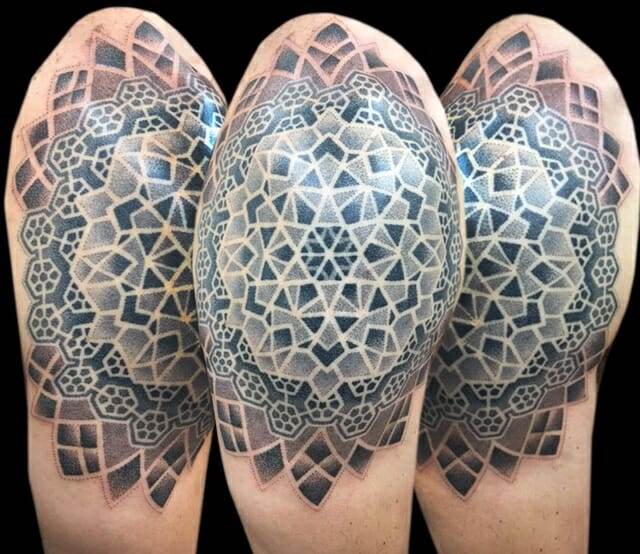
The Role of Mandala Tattoos in Healing
Mandala tattoos have been found to have therapeutic benefits, particularly for those who have experienced trauma or pain. The act of getting a tattoo can be empowering and cathartic, allowing individuals to reclaim their bodies and express their personal journey.
For some, mandala tattoos serve as a reminder of their strength and resilience. They can be a visual representation of overcoming obstacles and moving forward in life. By looking at their tattoo, individuals can find comfort and inspiration during difficult times.
There are also numerous examples of how mandala tattoos have helped individuals heal from emotional or physical pain. The act of getting a tattoo can release endorphins, which are natural painkillers that promote feelings of well-being. Additionally, the process of designing and choosing a mandala tattoo allows individuals to take control of their own healing journey and create something beautiful out of their pain.
In conclusion, mandala tattoos are not just beautiful works of art; they hold deep spiritual significance and can serve as powerful tools for self-discovery and healing. By embracing the intricate patterns and symbolism of mandalas, individuals can tap into a deeper sense of self and gain insight into their place in the universe. Whether you choose to get a mandala tattoo or simply appreciate their beauty, there is no denying the impact they have had on modern culture. So, why not consider getting a mandala tattoo and embark on your own spiritual journey?

